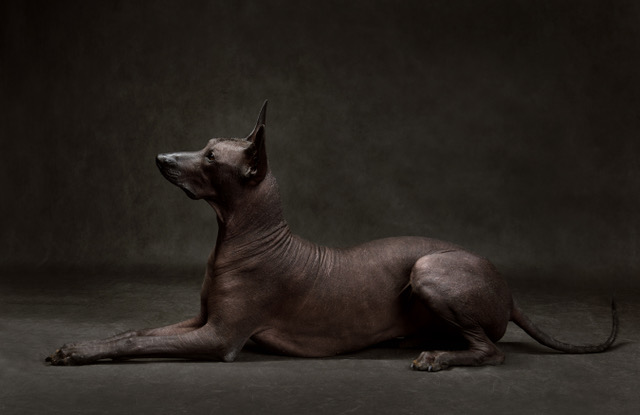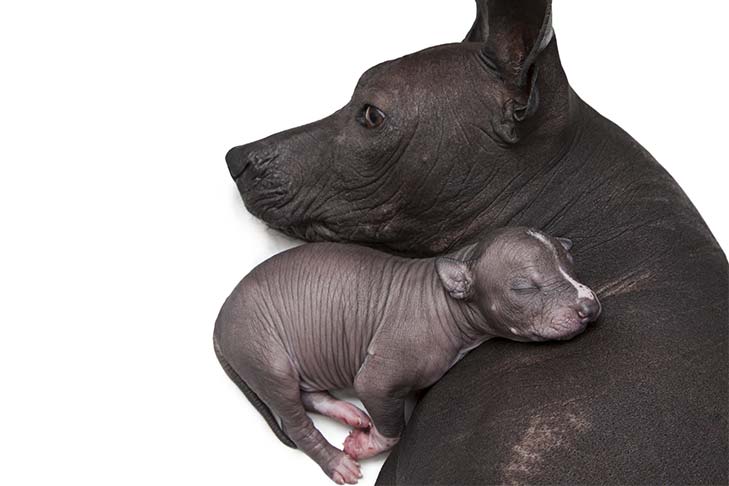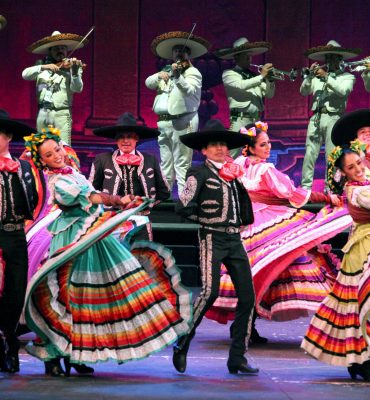
If you watched Disney’s hit animated film, Coco, you might have been intrigued by the unique black dog that accompanied the main character on his adventures. That dog is a Xoloitzcuintli (pronounced “show-low-eats-quint-lee”), often referred to as Xolo for short. This unique Mexican breed is immediately identifiable for its elegant, regal frame, large ears, and hairless appearance. It is considered a national treasure in its country of origin and is regarded as one of the oldest dog breeds. Xolos share DNA with prehistoric dog breeds making them the closest living relatives to ancient canines today.
The earliest accounts of Xolo dogs date back more than 4000 years to the Aztec empire. If you want to know more about Mexican culture and its cuisine, please click here. The dogs were named by the Ancient Mayan people after their god, Xolotl, and were highly regarded in this ancient society. The god Xolotl is often depicted in art with the canine’s head and was believed to lead souls to the underworld. It is said that he created Xolo dogs to send to the mortal realm for humans. The Mayans and other cultures believed Xolos would guide souls to the afterlife, and archaeological digs have found evidence of Xolo skeletons, collars, a dog bowl, and even pottery statues of the dogs in ancient graves. Even today in Mexico, it is believed by some that showing cruelty to a dog while alive means that the Xolos will refuse to help you cross to heaven after death.
Apart from their religious and ritual significance, the Aztecs also used the Xolos as hunting dogs and guarding and sentry work. Xolos were also gifted to other tribes for diplomatic purposes and food shortages eaten by the tribes. They, alongside turkeys, were the only domesticated animal the Aztecs regularly consumed.

The Strange Hairless Dog
The earliest European accounts of the Xolos date back to the 16th century, with famed explorer Christopher Columbus writing about “strange hairless dogs” that he observed on his travels to the new world roaming with the Aztecs. Spanish conquistadors who arrived in Mexico also wrote of the dog’s closeness with the indigenous people, noting how the Aztecs would wrap Xolos in blankets and tuck them in alongside children during cold nights. While initially repulsed by dog meat consumption, the invaders eventually developed a taste for the animal. This period marks the beginning of a turbulent phase in the Xoloitzcuintli’s history, which almost led to its extinction.
Spanish Zeal
The Spanish conquistadors, who brought with them a zeal for spreading Christianity, disliked the Aztecs’ spiritual practices, leading to the shunning of the Xolo. The dogs’ rapid consumption by the new settlers, cross-breeding between Xolos and European dog breeds brought by the invaders, such as Dachsunds and Poodles, further reduced their numbers. By the early 19th century, the last remaining Xolos could only be found in isolated mountain village communities.
American Kennel Club
Little effort was made to revive the breed even when recognized by the American Kennel Club in the later 18th century and despite a Xolo winning an AKC champion title in the 1940s. However, the breed would sound itself in the center of a new movement in its homeland. After the 1910 Mexican revolution, the country worked to strengthen its national identity through an increased interest in Indigenous arts and culture. The humble Xolo became embraced by famous Mexican artists, such as Frida Kahlo and Diego Rivera, who included the distinctive dogs in several of their works. With this newfound popularity came the desire to preserve the breed. In the 1950s, a team of scientists scoured Mexico for the last remaining Xolos, eventually ending up with ten dogs used as part of the breed’s revival efforts.









